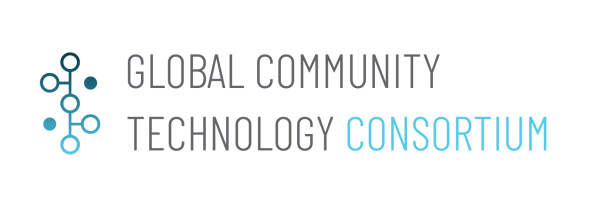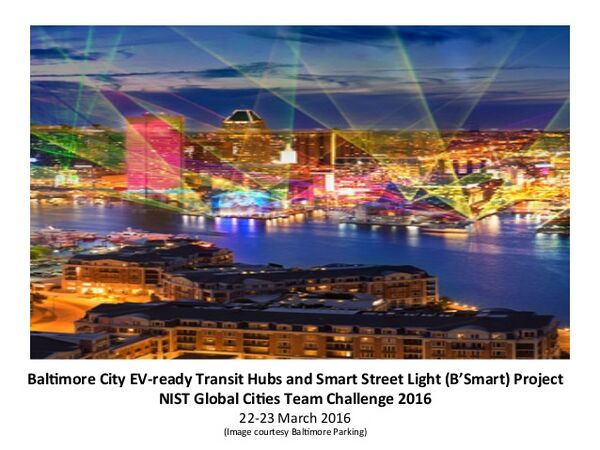Smart Transit Hubs - B Smart
Jump to navigation
Jump to search
| Smart Transit Hubs - B Smart | |
|---|---|

| |
 Baltimore City EV Ready Transit Hubs | |
| Team Organizations | City of Baltimore Departments of Transportation Energy and IT Baltimore Gas & Electric Cisco Verizon IDC Universities of Maryland Old Dominion Toronto Greater Baltimore Committee Baltimore community associations Maryland Transit Administration |
| Team Leaders | Jill Sorensen |
| Participating Municipalities | Baltimore MD |
| Status | |
| Document | None |
Description
Pilot a smart street light corridor within a system of transit “super-nodes” developed by transforming current major transit stations into transit hubs (Hubs) defined by:
- connected, city-wide mobile resources; public wifi
- last mile, multi-modal transport between and to/from Hubs (car share, bike share, ride share, preferably electric vehicles with EV-charging at Hub)
- GPS / GIS / location services
- Bus rapid transit, preferably electric, running non-stop Hub to Hub
Challenges
- Transit and mobility resources in Baltimore City is slow and inefficient; coordination between City and State units of government is strained.
Solutions
- The B’Smart Project will identify two transit stations in West Baltimore and a service corridor or “greenway” that can connect the two stations with bus rapid transit (BRT), public wifi, smart street lights for reducing energy and improving lighting and communication options, cycle tracks, safe, well-lit walkways, and citizen mobility improvements through last-mile connections to the stations, including car share, bike share and ride share. Electric vehicles will be encouraged. GPS and GIS technologies will inform movement of people and objects along the greenway. The stations will become “Hubs” for gathering, shopping, recreating, getting around the City, doing business.
Major Requirements
- Develop B’Smart Team. Conduct ongoing = weekly status calls.
- Identify stakeholders (City, State, communities, utility, businesses, consultants and experts, facilitators)
- Create scope and requirements for West Baltimore B’Smart pilot
- conduct street light survey of stakeholders
- pilot smart street light specifications
- installation, operations/data management plan
- Develop system architecture
- Create application development team, develop mobile application
- Design and roll out pilot
- Run pilot for six months. Analyze impact. Report.
Performance Targets
| Key Performance Indicators (KPIs) | Measurement Methods |
|---|---|
|
|
Standards, Replicability, Scalability, and Sustainability
- Requires interoperable GPS, crime-reporting, emergency response
- Establishes standardized procedures for greenway communications management
- emergency response
- vehicle movement
- pedestrian activity
- Standardized processes are not unique to city or region and can be replicated and scaled up in multiple cities/communities. The solution is planned to be replicated in 1 city in the US and 1 city in Europe.
- The system will have its own business model to create sustainable revenue stream.
Cybersecurity and Privacy
Impacts
- Energy and cost savings from LED street light installations
- Transit improvement with Hubs and BRT Hub to Hub
- Safety improvement by activity monitoring and response systems
- Improve health and wellness with safe cycle and walking paths
- Community engagement and access through SSL public wifi to improve perception and reality of crime in greenway and transit hub locations.
Demonstration/Deployment
- Phase I Pilot/Demonstration:
West Baltimore smart street light pilot survey results reported; collaboration with City, local utility BGE and local partners.
- Phase II Deployment:
Real-time working application of West Baltimore smart street light pilot in greenway corridor between two pilot West Baltimore transit hubs.